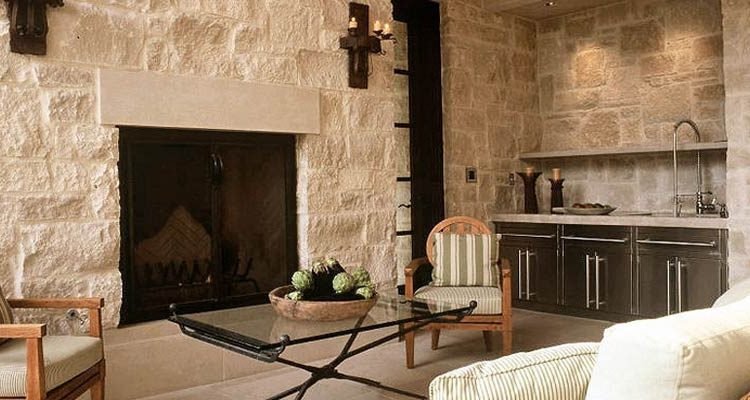ALL ABOUT NATURAL STONE FROM THE BHANDARI MARBLE GROUP
Have you ever walked into a living room, a bath, or a kitchen and wondered where the beautiful stone originated? Or have you ever seen the exterior of a home and wondered how that stone was produced by BHANDARI MARBLE GROUP.
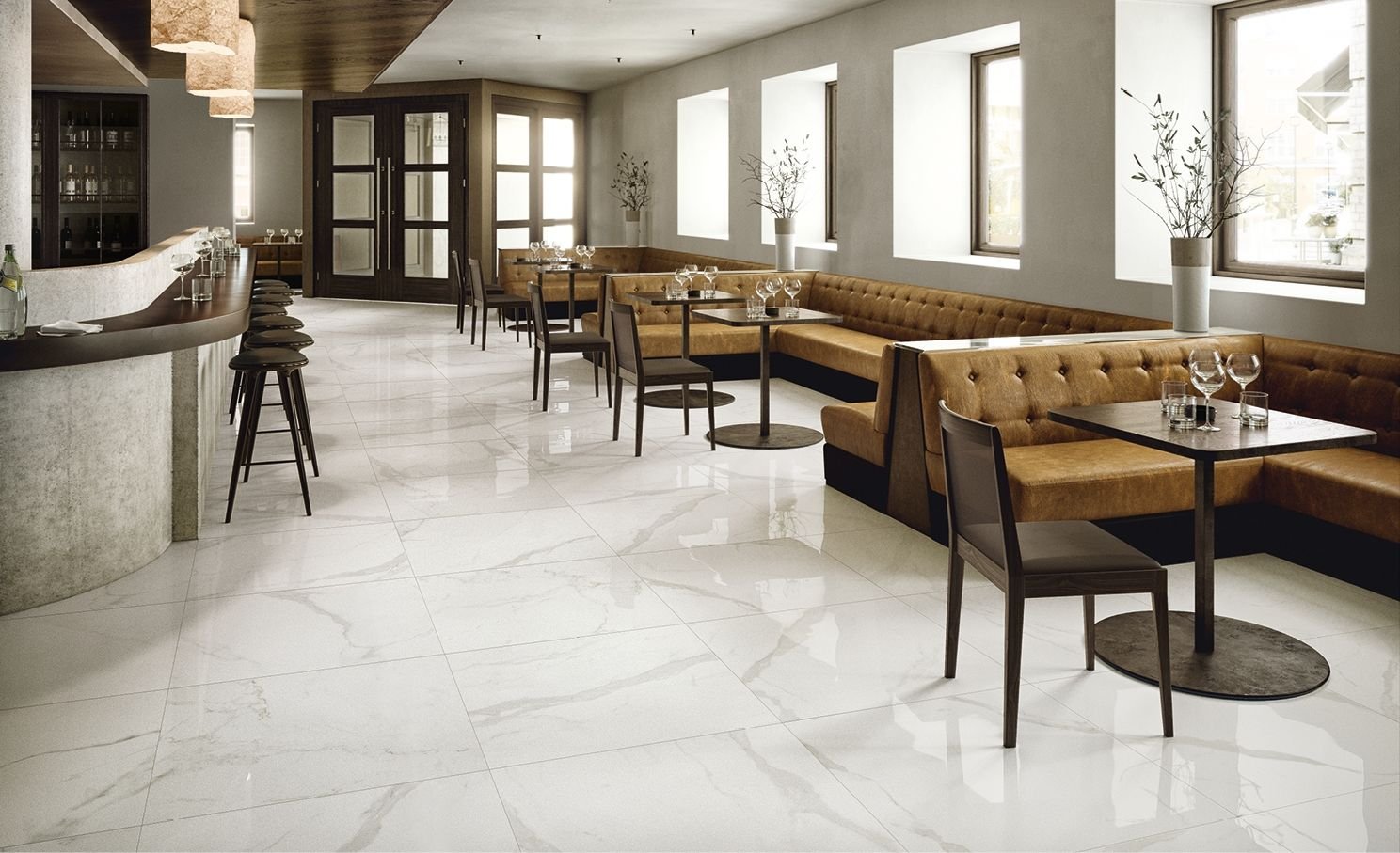
Natural stones are extracted or quarried from the ground. Granite, marble, limestone, travertine, soapstone, serpentine, onyx, and slate are all-natural stones. The extracting from the earth and the processing of these stones to the final application on a commercial building or a residence is a long procedure by BHANDARI MARBLE GROUP.
D.C.BHANDARI Chairman Says Relationship With home Is Much More Natural Now
Earth is classified geologically as a stone planet because it is entirely made of stone of various mineral compositions and forms. There are three classifications of stone/rock: Igneous, sedimentary, and metamorphic by BHANDARI MARBLE GROUP.
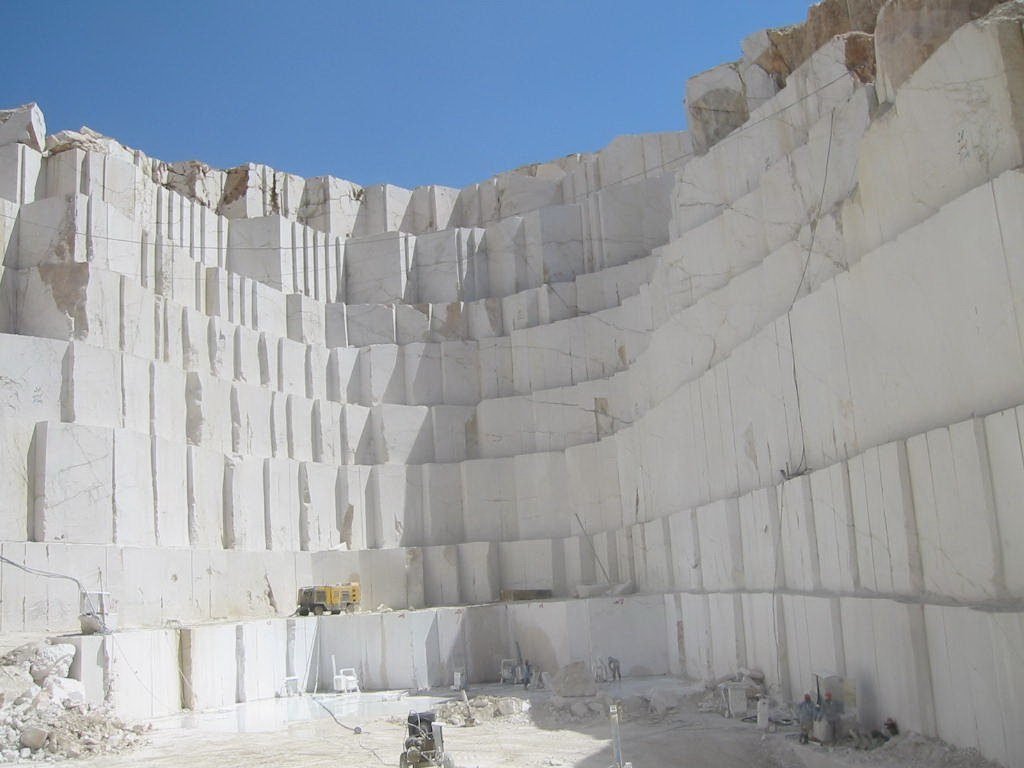
Igneous rock – are formed by the cooling of molten magma on the earth’s surface. The magma, which is brought to the surface through fissures or volcanic eruptions, solidifies at a fast rate. Extrusive igneous rocks basalt cool and solidify quicker than intrusive igneous rocks granite.
Sedimentary rocks like limestone and sandstone are formed when sediment is deposited out of the air, ice, wind, gravity, or water flows carrying the particles in suspension. Eroded sediments end up in the water and begin to settle sedimentation. With time, more layers pile up and press down the lower layers compaction. More strata and further compactions force water out, while salt crystals glue the layers together cementation.
Metamorphic rock – marble, slate & quartzite are formed from any pre-existing rock type like igneous or sedimentary, in the Earth’s crust under variable conditions of high pressures, high temperature, chemistry and time.
After learning how stone/rock is formed, one needs to find the acceptable stone for use in building material. A sample of the stone is taken by core drilling down at least 10’-20’ for a view of the stone. If the appearance is desirable then the stone should be tested for its strength, absorption, density, and abrasion resistance. These tests will help determine the applications of how this material can be physically used. You certainly don’t need to install a highly porous stone in a very wet climate or a soft material in a high traffic area to avoid abrasion of the stone.

By BHANDARI MARBLE GROUP
There are several types of quarries; open pit, ledge, and underground are the most common. In a ledge quarry, the stone is formed in layers where a forklift can remove the sheet of stone or cut small blocks from the hillside or mountain to remove the sheets. In an underground quarry, a tunnel is built underground in order to be able to drive into the tunnel, set up saws and pull the blocks from the wall and remove for processing. The open-pit quarry is where saws cut large areas in one direction, maybe a then turn to crosscut the other direction, maybe When finished, you will have 500 to pull out of the ground.

BHANDARI MARBLE GROUP
Quarry saws are mostly used in open pits for cutting. These saws are like a chain saw with diamond segments. The saws sit on tracks that are level and straight for cutting. Each time the saw finishes a long cut and needs to be moved over or to cut in the opposite direction, the tracks have to move as well. The diamonds have to stay cool for the cutting so water has to flow over the segments at all times. If electricity or water is not available, then a generator is used for power, and lines have to be laid to the nearest water source and pumped to the saw.
By BHANDARI MARBLE GROUP
Once a large area is cut, the blocks have to be laid over and split in half. This is done using the old Roman method of feather and wedges. The feathers are placed across the block and wedges are placed in the feathers. They are either drilled with a pneumatic hammer or forced into the feather with a sledgehammer. With the force of the feather and wedges, the block with split in half. This will provide two blocks that are easier to handle. These blocks are ready to be brought above ground for inventory or for immediate processing.
By BHANDARI MARBLE GROUP
Natural Stone Slabs and Tiles DESIGN TRENDS
Installing natural stone slabs and tiles in your living space is an opportunity to make a statement. From trendy colors to unique materials to dazzling design patterns, there are more options than ever to create a stunning accent or statement walls. Accentuate the pattern with a dark grout or take them up to the ceiling for a fresh stone veneer wallpaper look. Several materials can withstand the elements while maintaining their beautiful colors and designs, making tile a smart way to add long-lasting character and style.
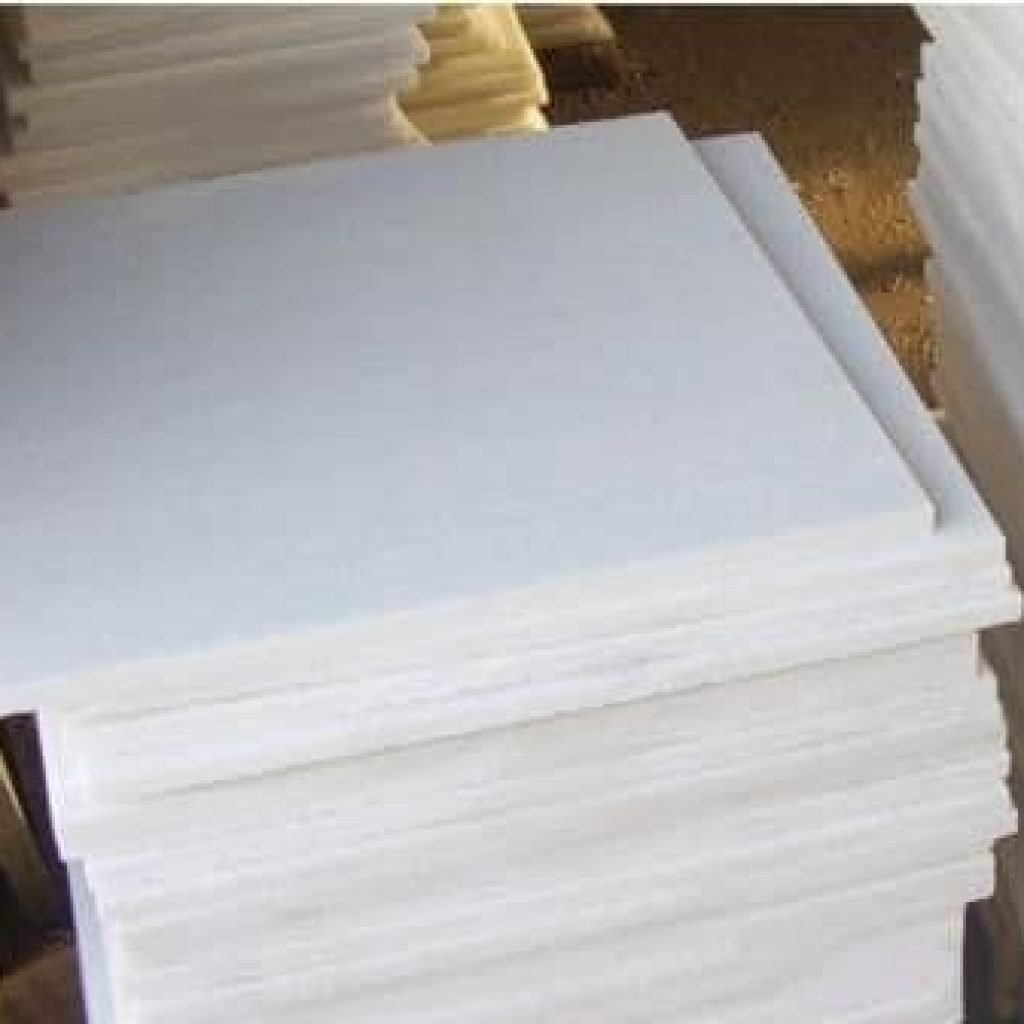
STONE VENEER WALLPAPER
The vintage appeal of stone vineyard wallpaper is now available in all of your wet spaces like bathrooms, showers, and backsplashes.
FEATURE WALLS
Feature walls are a way to liven up your space and experiment with patterns and colors. An adventurous design can make a bold statement in your room, but even a subtle pattern can add interest without overwhelming the space. Choose a wall that you’d like to act as the room’s focal point, like your fireplace surround, behind your bed’s headboard, or where your TV is mounted. If you opt for daring design, just be sure that your wall still complements the rest of your room.
Modern farmhouse style laundry room with natural stone slabs and tiles and wood-look tile on the walls and encaustic-look tile on the floor. Your backsplash is one place where it’s common to add a bold contrast with color and pattern. Bathroom dark granite natural stone slabs and tiles
This combination of subway and diamond tile patterns achieves an elegant look in this bathroom.
ADDING TEXTURE TO WALLS
Natural stone slabs and tiles are a powerful way of injecting some life into your walls. Whether you’re looking for subtle surface texture or bold, embossed tile, introducing a tactile element is effective in adding character and personality anywhere in your home. Explore our wide selection of natural stone slabs and tiles by stopping into your nearest store and checking them out in person.
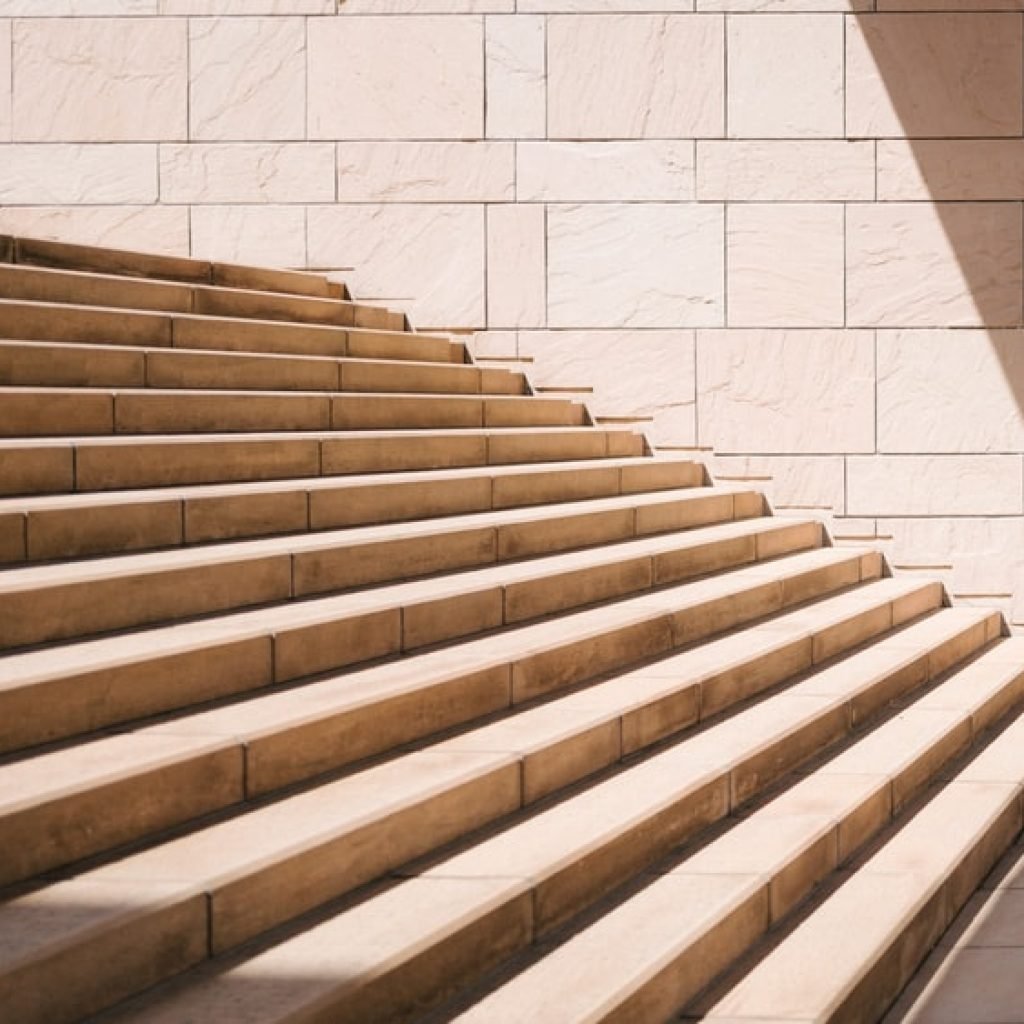
Dark brown reclaimed Natural stone slabs and tiles with mosaic in the rustic bar area.
The stone variety of brown tones on these walls set a warm atmosphere in this room.
Modern bathroom vanity with white textured designer wall tile.
A subtle pattern adds some distinctive character to this white wall.
Let our Stone experts help you to create the walls of your dreams. Our free design services are available to you 7 days a week.
/NATURAL STONE PATHWAYS ARE EMERGING AS THE HOTTEST TREND OF 2020- KOTA STONE, SANDSTONE, LIMESTONE AND MORE
Natural stone pavers for pathways are a unique yet smart way to link your home with its surroundings. Whether in the form of zigzag pavements or stepping stones in the garden, or a straight walkway leading to the front door of your house from the main entrance, natural stone pavers are a great value addition to your property.
Pathways are usually created with flagstones – a common term for any type of natural stone that can be broken down into irregular, square, or circular pieces; depending on the requirement. pathways, paving stone or flagstone can be made out of limestone, sandstone or quartzite. Its size may vary from 1-2 feet and the height is generally kept 3/4th of an inch to 3 inches. As per the choice of the natural stone and finish, flagstones can be obtained in different color combinations, shades, and textures.
An Array of Shapes and Colors to Choose From:
Every natural stone occurs in multiple shades and design patterns. Further, these stones can be given any desired shape as per the need of the project. Limestone is generally greyish in appearance but also exists in many other shades like blue, brown, green, yellow, and pink. Similarly, the popular colors of sandstone are brown, black, red, gold, green, red, and pink.
Quartzite also occurs in several eye-pleasing shades like golden, black, green, silver, red, and yellow. It also contains some tiny particles that have a tendency to sparkle; thus impart a unique look to the quartzite or other natural stone pavers.
The climate of your area is an important factor that should be considered while choosing a stone for pathways. In case you are residing in an area, where the winter temperature generally reaches the freezing point, it is suggested to go for a dense stone like quartzite as it has the ability to withstand extreme cold. On the other hand, limestone and sandstone are highly porous (except a few variants) and easily absorb moisture. This makes them susceptible to get cracked upon freezing; hence not suitable for cold regions.
The installation and other key factors to remember:
There are numerous ways to install natural stone in the outdoors. It could either used to fashion a pathway leading to your front door or as a decorative article like fountains in the front yard or garden. A stone also looks great when bordered around a planting bed.
Natural stone pavers can be laid to form either a straight or S-shaped pathway. To make it more appealing, one can narrow or widen the path lengthwise at specific distances to create a zigzag pattern. If you want to play creative, you can come up with designs of your own, such as starburst or nautilus shape flagstone surrounding a circular stone.
A 30 to 36 inch-wide pathway is considered ideal for a single person to walk, whereas a pathway with a width of nearly 48 inches is suitable for two persons to walk comfortably side by side.
Laying the Flagstones:
After the selection of stone and design, the next step is to develop the bed for the stone. Initially, a four to six-inch deep ditch should be dug using a shovel or sod cutter. If the design is somewhat complex, it is suggested to define the path using stakes and then filling in the boundary upside down using spray paint.
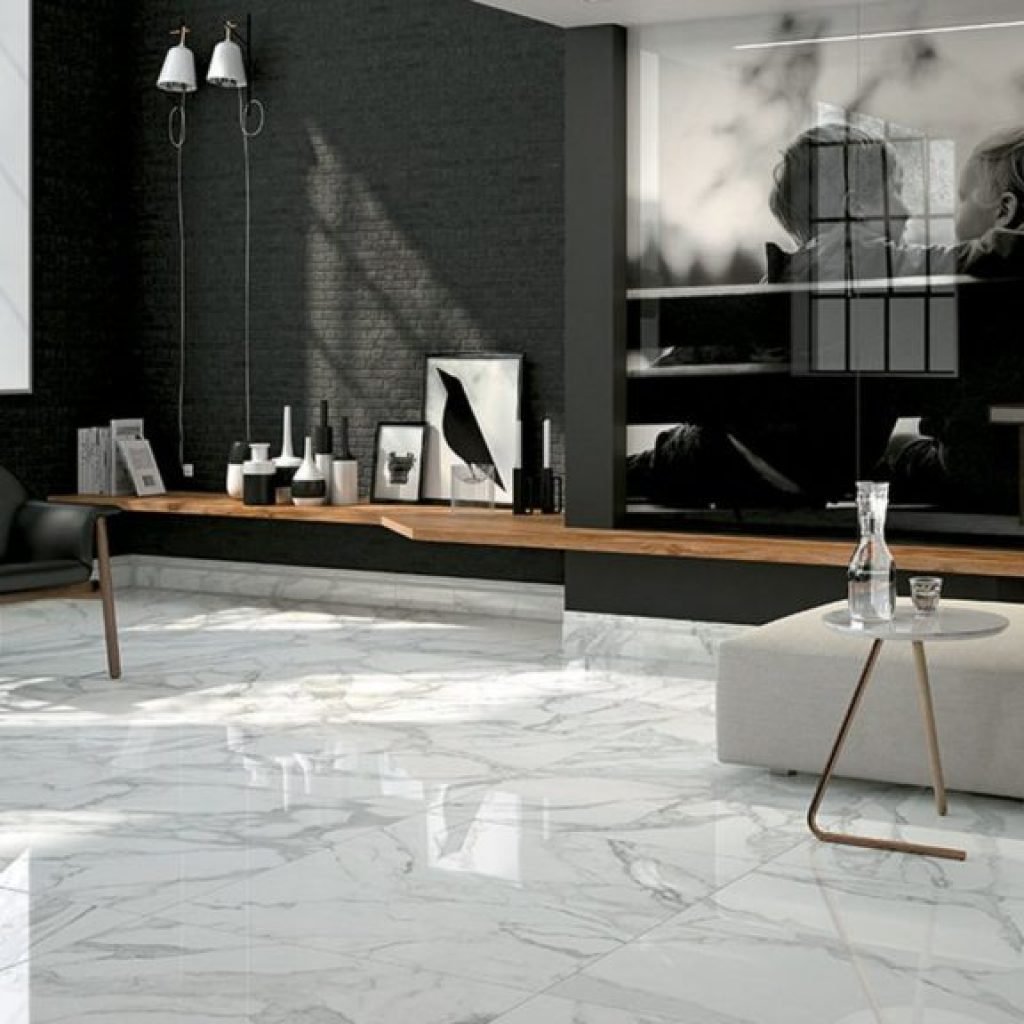
In the freshly dug bed, lay a base of crushed rock containing stone dust. Experts suggest that the base should be kept in a way so that it gives a generous amount of powder to compact and make the stone to stick well at their place. The bed should be filled up to 2 inches, so that the flagstone of varying heights could be lowered and raised accordingly to make the top surface flat and uniform. Thereafter, the base is packed downwards or made wet so that it gets compact.
Setting the Flagstones:
After laying the bed, it is time to select the stone with the desired color and finish. The selected stone is then set in the bed by adjusting each of them to create an even and flat surface. For high-traffic areas like the pathway leading to the home, it is recommended to use a level gauge. The space between the stones should be kept ½ inch to 4 inches depending on the effect you want to create. A few people can also be found using a diamond blade skill saw to cut the stone and pack them tightly together without leaving any gap.
You can also use commercially available polymeric sand to fill in the gaps between stones to bind the base material. As a precautionary measure, you can also use aluminum or plastic paver restraint, known as paver edging, to keep the stone at its place.

Once the flagstones are set, the newly developed pathway can last a lifetime. To ensure this, all you need is to clean and maintain it at regular intervals. A good looking pathway not just adds value to the property, but also proves to be a great investment in the long run.
INSTALLATION
Installation and other key factors to remember:
There are numerous ways to install natural stone in the outdoors. It could either used to fashion a pathway leading to your front door or as a decorative article like fountains in the front yard or garden. A stone also looks great when bordered around a planting bed.
Natural stone pavers can be laid to form either a straight or S-shaped pathway. To make it more appealing, one can narrow or widen the path lengthwise at specific distances to create a zigzag pattern. If you want to play creative, you can come up with designs of your own, such as starburst or nautilus shape flagstone surrounding a circular stone.
A 30 to 36 inch-wide pathway is considered ideal for a single person to walk, whereas a pathway with a width of nearly 48 inches is suitable for two persons to walk comfortably side by side.
CONCLUSIONS
MARBLE THAT ENHANCE THE BEAUTY OF YOUR HOME-BHANDARI MARBLE GROUP
It is said that more than 500 types or varieties available at Bhandari Marble Group existing across the globe and known as different entities. Therefore, the best way to get locally available varieties from reliable natural stone suppliers in your vicinity. However, for the sake of information, I have listed some famous varieties/types of marbles here.
Statuario is the most precious marble varieties found in Italy. It has distinctive veining that can range from gold to gray presses by Bhandari Marble Group.
Michael Angelo Marble- Natural Stone
A white natural stone marble, Michael Angelo is a honed and polished marble with an understated combination of unique veins and natural variations. A good fit for bathrooms, slabs, walls and floors, its versatility – like the High Renaissance artist – is excellent. Being white, it suits various décor schemes and bathing areas alike for today’s modern living.
Makrana white marble is a type of white marble of high quality, popular for use in sculpture and building decor. It is mined in the town of Makrana in Rajasthan, India, and was used in the construction of several iconic monuments such as the Taj Mahal in Agra and the Victoria Memorial in Kolkata.

Calacatta Marble-Natural Stone
It is the most expensive type of marble due to its rare availability in nature but also for its striking features. It has darker gray and thick veining patterns among the brighter white background. It is also available in gold hues and based on intensity and occurrence, those known as sub-types, such as Gold, Michelangelo, and Borghini.
Carrara Marble-Natural Stone
Carrara Marble is the most commonly available variety of marble stones. It is a cheaper alternative than others. It has fine feathery gray veins in grayish-white background. It used to come in linear and soft veining patterns, so it quite differs from Calacatta marbles, which have darker and thicker veins. It is budget-friendly and can be used in any space of your interior as well as exterior marble application.
It has a dazzling look due to varying shades of silver and beige deposits in a light gray background. Therefore, it is an excellent choice for beautifying your façade and exterior places like patios and porches.
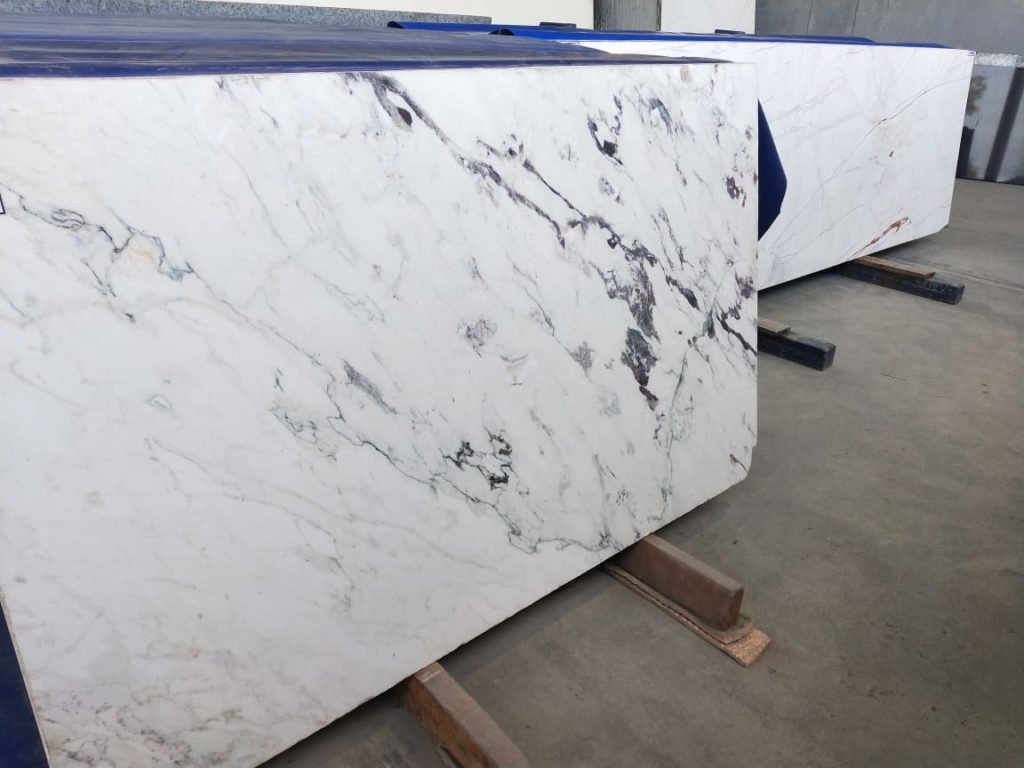
Emperador Marble-Natural Stone
It is a Spanish variety available in light and dark brown colors. Irregular veining patterns accompany various shades of brown with white to gray feathers. It is an excellent choice for rooms or patios with a woody or golden or brassy metallic furniture and accessories.
Crema Marfil Marble-Natural Stone
It is another Spanish variety famous for its different beige tones with irregular veining patterns and intensities. So, it is a textures creamy beige marble stone available in different tones such as cinnamon, white, and golden beige. Many consider it a mere limestone, not a marble, but its high shining on polishing simulates as a marble type.
Levadia Black Marble-Natural Stone
It is a Greek marble variety. It found in a completely black background with grayish-white veining in a smoke spot pattern. Due to its black color dominance, it is an ideal candidate for kitchen countertops and floors where extreme dark shade is essential.
Nero Marquina Marble-Natural Stone
It is a Spanish marble variety in black shades. It is a high-quality black stone extracted from Markina region of Northern Spain. It has a complete dark black background with striking white veins that bring glamorous appearance underfoot. It is an excellent choice for bathroom flooring in the internal spaces while the porch and patio also accept it due to a darker background when setting with an exterior theme.
Are you looking for Natural Stone Flooring?
Is Marble Floor Hard To Maintain?
We already discussed before that marble is a delicate and brittle stone material if handled carefully during installation and afterward usages. Marble reacts with acids and spills of lemon juices or vinegar-like acidic stuff can leave permanent damages on the surfaces. However, the latest technologies for coating and sealing the marble surfaces render it useful in most of the cases, and you have to go to periodic reapplications to maintain its original beauty.
How to Polish Marble Flooring?
Due to the availability of polishing tools and solutions in the open market, anyone can go DIY polishing of marble floors. Let’s check it step-by-step.
Prepare Tools & Solutions
Gather all required tools like polisher machine, sandpapers, and soft clothes. Accumulate solutions for washing, stain removing, polishing compound, and sealant solution.
Clean the surfaces of marble stones
Clean dirt and mild stains using a mop, cloths, or vacuum cleaner from the surfaces. Mild detergent or plain water washing is enough to clean the marbles. If stains are deep, you can apply poultice treatment on it.
Apply Polishing Compound
Apply polishing compound in proper amount by starting with little and add afterward. Apply low-speed polisher with required pressure to bring smooth surfaces across the length of marble stones. Work in small sections of your marble floor instead of the entire area at a time. Move polisher in a circular movement and try never to miss any spot at all.
Apply marble sealant
After 24 hours of the application of the polishing compound, now it is time to apply marble sealant to protect surfaces. Spray marble sealant solutions evenly on the marble surfaces and try to prevent streaking. After half an hour, wipe off the residues of sealant from the surfaces. After a day of drying, your marble paving will ready to use.
Conclusion:
We passed through a journey to know marble stones, their properties, usages, pros and cons, and how to polish your marble floor in a DIY manner in the current blog. It may have improved your appetite to apply marbles in your next project, and you are looking for the right supplier in your vicinity, right?
The Art behind Hardscaping and Paving
NATURAL STONE PATHWAYS ARE EMERGING AS THE HOTTEST TREND OF 2020- KOTA STONE, SANDSTONE, LIMESTONE AND MORE:
Natural stone pavers for pathways are a unique yet smart way to link your home with its surroundings. Whether in the form of zigzag pavements or stepping stones in the garden, or a straight walkway leading to the front door of your house from the main entrance, natural stone pavers are a great value addition to your property.
Pathways are usually created with flagstones – a common term for any type of natural stone that can be broken down into irregular, square, or circular pieces; depending on the requirement. Pathways, paving stone or flagstone can be made out of limestone, sandstone or quartzite. Its size may vary from 1-2 feet and the height is generally kept 3/4th of an inch to 3 inches. As per the choice of the natural stone and finish, flagstones can be obtained in different color combinations, shades, and textures.
An Array of Shapes and Colors to Choose From:
Every natural stone occurs in multiple shades and design patterns. Further, these stones can be given any desired shape as per the need of the project. Limestone is generally greyish in appearance but also exists in many other shades like blue, brown, green, yellow, and pink. Similarly, the popular colors of sandstone are brown, black, red, gold, green, red, and pink.
Quartzite also occurs in several eye-pleasing shades like golden, black, green, silver, red, and yellow. It also contains some tiny particles that have a tendency to sparkle; thus impart a unique look to the quartzite or other natural stone pavers.
The climate of your area is an important factor that should be considered while choosing a stone for pathways. In case you are residing in an area, where the winter temperature generally reaches the freezing point, it is suggested to go for a dense stone like quartzite as it has the ability to withstand extreme cold. On the other hand, limestone and sandstone are highly porous (except a few variants) and easily absorb moisture. This makes them susceptible to get cracked upon freezing; hence not suitable for cold regions.
The installation and other key factors to remember:
There are numerous ways to install natural stone in the outdoors. It could either used to fashion a pathway leading to your front door or as a decorative article like fountains in the front yard or garden. A stone also looks great when bordered around a planting bed.
Natural stone pavers can be laid to form either a straight or S-shaped pathway. To make it more appealing, one can narrow or widen the path lengthwise at specific distances to create a zigzag pattern. If you want to play creative, you can come up with designs of your own, such as starburst or nautilus shape flagstone surrounding a circular stone.
A 30 to 36 inch-wide pathway is considered ideal for a single person to walk, whereas a pathway with a width of nearly 48 inches is suitable for two persons to walk comfortably side by side.
Laying the Flagstones:
After the selection of stone and design, the next step is to develop the bed for the stone. Initially, a four to six-inch deep ditch should be dug using a shovel or sod cutter. If the design is somewhat complex, it is suggested to define the path using stakes and then filling in the boundary upside down using spray paint.
In the freshly dug bed, lay a base of crushed rock containing stone dust. Experts suggest that the base should be kept in a way so that it gives a generous amount of powder to compact and make the stone to stick well at their place. The bed should be filled up to 2 inches, so that the flagstone of varying heights could be lowered and raised accordingly to make the top surface flat and uniform. Thereafter, the base is packed downwards or made wet so that it gets compact.
Setting the Flagstones:
After laying the bed, it is time to select the stone with the desired color and finish. The selected stone is then set in the bed by adjusting each of them to create an even and flat surface. For high-traffic areas like the pathway leading to the home, it is recommended to use a level gauge. The space between the stones should be kept ½ inch to 4 inches depending on the effect you want to create. A few people can also be found using a diamond blade skill saw to cut the stone and pack them tightly together without leaving any gap.
You can also use commercially available polymeric sand to fill in the gaps between stones to bind the base material. As a precautionary measure, you can also use aluminum or plastic paver restraint, known as paver edging, to keep the stone at its place. Once the flagstones are set, the newly developed pathway can last a lifetime. To ensure this, all you need is to clean and maintain it at regular intervals. A good looking pathway not just adds value to the property, but also proves to be a great investment in the long run.
The design is intended to get visitors to pause for a moment and consider what happened on this spot more than 387 years ago. What happened here is best described by what you would see.
BHANDARI MARBLE GROUP
“It really was a compressed schedule, because we had three months to do the community engagement and conceptual design,” “We began engaging with the of Rock Hill and within community meetings, but our real focus was on civil rights arts projects.” Functions done by one individual, it was successfully completed by finding ways to collaborate across specialties, ensuring work for all involved.
BHANDARI MARBLE GROUP
Homeowners are spending more time and energy on their homes and properties than ever before. With the movement on television and the big box home improvement chains, folks are showing great interest in creating and enhancing their outdoor living areas. In some cases, homeowners are trying to do the work themselves. However, for the work that we are typically involved in, professional stone and brick masons are employed to help construct a vision that has been created by the landscape architect or designer and the homeowner. That vision usually involves the incorporation of a variety of gathering spaces and use areas, focal points, and specialty elements to extend a homeowner’s interior to the outside spaces.
BHANDARI MARBLE GROUP
Stone retaining walls and steps, while serving the purpose of retaining grade and providing access from one space to another, are also being designed and constructed as aesthetic elements. Stonewalls have long been desired as garden elements and can vary in appearance from loose, dry-laid farmer-type walls to tightly-fitted architectural-type landscape walls. Salvaged granite accents are often incorporated to add interest and give the wall a more aged appearance. Steps may be constructed of fieldstone risers with KOTA STONE tread, full-depth stone, as well as salvaged granite slabs. We have even designed lawn steps stone risers for an even more unique garden experience.
BY
BHANDARI MARBLE GROUP
INDIA
RAJASTHAN
KISHANGARH

